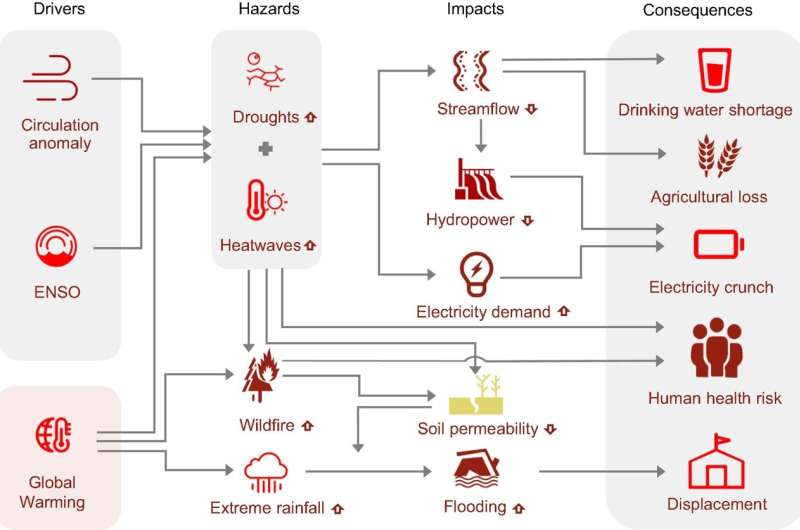This article has been reviewed according to Science X's editorial process and policies. Editors have highlighted the following attributes while ensuring the content's credibility:
fact-checked
trusted source
proofread
The 2022 Sichuan-Chongqing spatio-temporally compound extremes: A bitter taste of novel hazards

A new study led by Dr. Zengchao Hao (College of Water Sciences, Beijing Normal University) and Dr. Yang Chen (Chinese Academy of Meteorological Sciences) documents the unfolding process, reason and impact of compounding and cascading among multiple weather and climate extremes during the course of summer 2022 across the Sichuan Chongqing region.
An exceptionally severe and sustained hot—drought in afflicting the Sichuan Chongqing region increased the dryness of forests, creating flammable conditions and sparking the widespread wildfires near Chongqing. Subsequent extreme precipitation, as a part of southwest China autumn rainfall, coincidently fell on the overheated and burned grounds, and elevated the risk of geological hazards such as flash floods and mudslides as a result.
The rapid sequence of these weather and climate extremes led to impacts cascading and multiplying across sectors, for instance human health, energy, agriculture, industry and emergency response. Both natural weather and climate variability and man-made climate change are at play in shaping the compound event. The team also pointed out underestimated socioeconomic and ecological vulnerability and therefore lack of preparedness to increasingly connected extremes.
Finally, the team proposed several key steps for addressing the imminent threat of compound and cascading hazards, including understanding and predicting extremes from a multivariate perspective, improving impact quantification and risk assessment through the compound event lens, and devising adaptation planning tailored to compound and cascading events.
The findings are published in the journal Science Bulletin.
More information: Zengchao Hao et al, The 2022 Sichuan-Chongqing spatio-temporally compound extremes: a bitter taste of novel hazards, Science Bulletin (2023). DOI: 10.1016/j.scib.2023.05.034
Provided by Science China Press





















